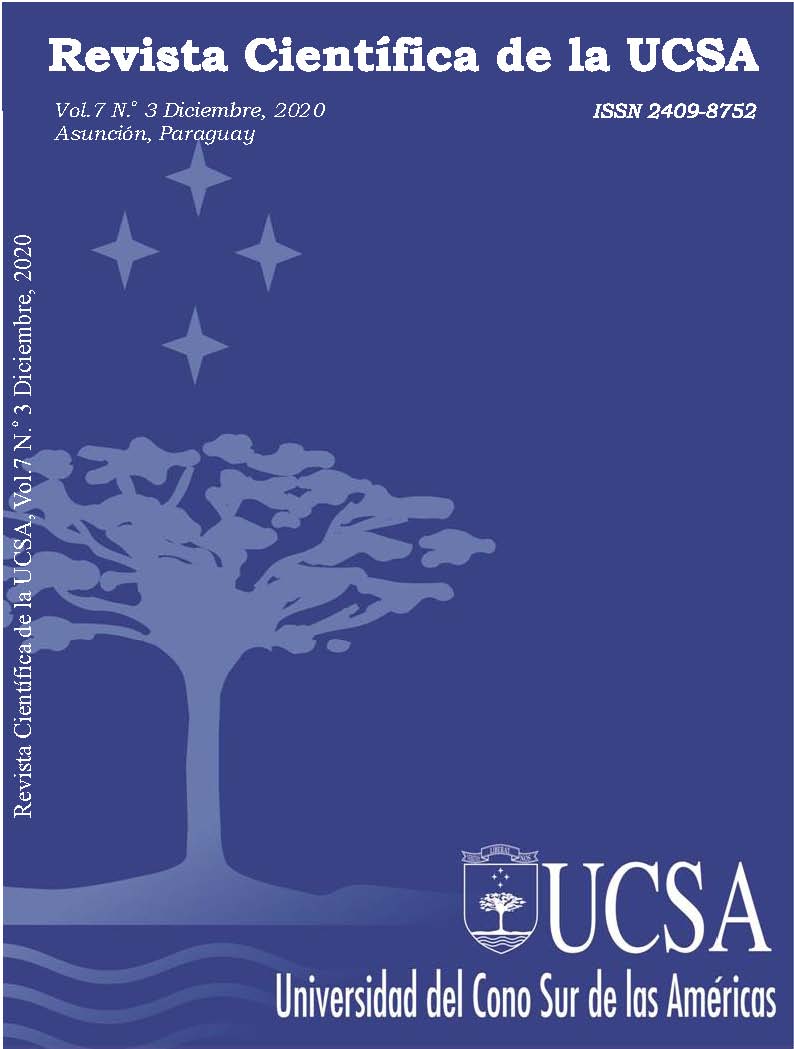Identification of learning and behavior difficulties in boys and girls 6 to 7 years of age attending a public school, located in the Julio Correa neighborhood, Luque, Year 2019
Main Article Content
Abstract
This non-experimental research was carried out in order to identify learning and behavior difficulties in children between 6 and 7 years of age who attend a Public School, located in the Julio Correa neighborhood of the City of Luque. The non-probabilistic sample includes forty-four students on the afternoon and the morning turns, belonging to the first grade. The instruments used were a battery of tests that measures the aptitudes for school learning; with it, the presence of learning difficulties was identified, a behavior alteration scale was also applied in the School with the collaboration of grade teachers, which allowed the identification of behavior problems. As results, it was obtained that of forty-four students, twenty-five presented learning difficulties and twenty-four behavioral disturbances. It was concluded that more than half of the population has learning and behavioral difficulties.
Article Details
Section
How to Cite
References
Morán, R. (2004). Educandos con Desórdenes Emocionales y Conductuales. Universidad de Puerto Rico.
Aguilera, A. (2004).Introducción a las Dificultades del Aprendizaje. McGrawHill.
American Psychiatric Association (2014).Guía de consulta de los criterios diagnósticos del DSM-5. Asociación Americana de Psiquiatría.
Arco Tirado, J.L. y Fernández Castillo, A. (2004). Necesidades Educativas Especiales. Manual de intervención y educación psicológica. McGraw Hill
Bonvecchio De Aruani, M. y Maggioni, B. (2006). Evaluación de los aprendizajes. Manual para Docentes. Novedades Educativas – Bs As. Disponible en: https://books.google.com.py/books?id=ZsbrZc0OxEEC&lpg=PA33&dq=definicion%20de%20aprendizaje&hl=es&pg=PA5#v=onepage&q=definicion%20de%20aprendizaje&f=false
Bravo Valdivieso, L. (1990). Psicología de las dificultades del aprendizaje escolar. Universitaria.
Cardoze, D. (2007). Los problemas de disciplina en la escuela: Manual para Docentes. Colección Manuales y Textos Universitarios N° 27, Serie Educación.
Delgado, E. B. (2008). Psicología del desarrollo. Desde la infancia hasta la vejez. McGraw Hill. Volumen 2.
Escoriza Nieto, J. (1998). Conocimiento psicológico y conceptualización de las dificultades de aprendizaje. Universitat de Barcelona. Disponible en
González Valenzuela, M.J. (Coord.), Barba Quintero, M.J., Delgado Ríos, M., Martín Ruiz, I. (2012) Prevención de las dificultades de aprendizaje. Madrid: Pirámide
Hernández Sampieri, R. y colaboradores (2014).Metodología de la investigación. 6ta. Edición. McGrawHill.
Llanos, S y colaboradores (2006). Dificultades de Aprendizaje. Cesip, Lima – Perú. Moreno Oliver, F.X. (2005). Los problemas de comportamiento en el contexto escolar. Documents–Barcelona. Disponible en
ABC color. La conducta y los factores biológicos, publicado el 19 de marzo de 2004. Disponible en http://www.abc.com.py/articulos/la-conducta-y-los-factores-biologicos-750644.html
Revisión de la Clasificación de los Trastornos Mentales de la OMS para Atención Primaria (2011). La CIE-11-AP. Disponible en https://fepsm.org/files/files/ICD11%20PHC%20Draft%20October%202011.pdf

